Life After Baby-Led Weaning: Exploring Toddler Eating Habits
In this episode we're talking about:
- How iron needs change when your baby turns 1 but why you still can't sleep on iron
- Why snacks will sabotage your healthy toddler meals and how to handle that
- What to do when picky eating sets in…it will happen but it doesn't have to ruin you!!!
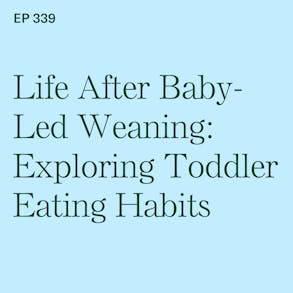
LISTEN TO THIS EPISODE
Episode Description
What changes when your baby turns 1 year old? Toddlers are tricky when it comes to eating, but knowing what to look out for can help. In this episode we explore transitioning to cow’s milk, how to deemphasize snacks and prioritize iron foods even as you’re dealing with the inevitable picky eating that usually sets in starting in the second year of life.
Links from this Episode
- Baby-Led Weaning with Katie Ferraro program with the 100 First Foods™ Daily Meal Plan, join here: https://babyledweaning.co/program
- Baby-Led Weaning for Beginners free online workshop with 100 First Foods™ list to all attendees, register here: https://babyledweaning.co/baby-led-weaning-for-beginners
Other episodes related to this topic:
- Episode 191 - 12 Month Babies: Sample BLW Feeding Schedules https://blwpodcast.com/episodes/191
- Episode 113 - Transitioning to Cow's Milk: How Do I Do This? https://blwpodcast.com/episodes/113
- Episode 35 - Snacks: Why Early Eaters Don't Need Snacks https://blwpodcast.com/episodes/35
- Episode 169 - Iron: Does My Baby Really Need to Eat 11mg Iron Per Day? https://blwpodcast.com/episodes/169
- Episode 294 - 5 Foods You Can Grow and Your Baby Can Eat with @redleafranch Brian Brigantti https://blwpodcast.com/episodes/294

Latest Episodes

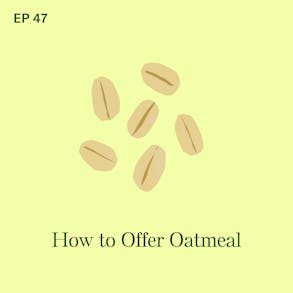

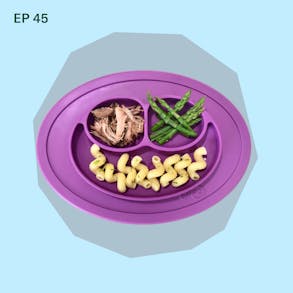
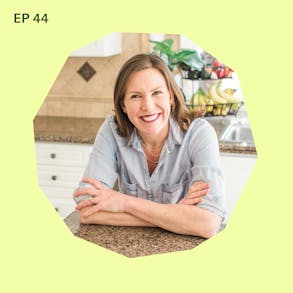
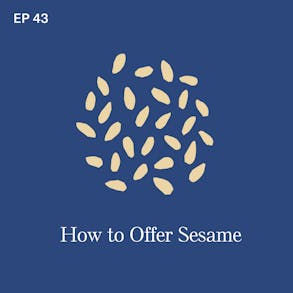
Katie Ferraro (1s):
Anyone have a picky eater? A mom who signed up for my workshop this week said I wasn't brave enough to try baby-led weaning with my firstborn, who's now a picky eater. Second baby turned six months. Soon I want to provide him with the resources to do baby-led weaning. If you are looking for those resources too, they're all inside of my free online video workshop called Baby-Led Weaning for Beginners. We're gonna cut through the confusion and set the record straight about starting solid foods safely so you can finally stop hunting and pecking all around the internet. For your answers, sign up for this week's workshop times at babyledweaning.co. I'll see you there. It is CPR Awareness Week, and while there is no higher risk of choking with baby-led weaning compared to conventional adult-led spoon feeding, choking is a very rare but real risk.
Katie Ferraro (41s):
And knowing CPR can save your baby's life, I always recommend that anyone who feeds your baby takes an infant refresher CPR course before you start solid foods so that in the unlikely event that your baby does choke on food, you know how to administer back blows. And if necessary, how to begin CPR This week, I'm teaming up with Thrive Training Institute to celebrate CPR Awareness Week, and we have a special online course bundle deal right now. You can get online CPR plus the Choking Prevention and Response course that I co-teach. I teach that course with Brandon. He's the founder of Thrive Training Institute and a certified CPR instructor. We also teach it with Dawn Winkelman.. You might know her as a guest on the podcast. She's a speech language pathologist who specializes in pediatric swallowing and baby-led weaning.
Katie Ferraro (1m 22s):
And so both the CPR course and the Choking and Prevention and Response course, they're available bundled together for $50 off. Now through June 11th, head to Bit.ly/blwthrive and enter the code BLWBootcamp to get $50 off the Choking Prevention and Response Course plus CPR. Again, that code is BLWBootcamp. The website is Bit.ly/blwthrive and get those CPR skills up to snuff while you also learn a little bit more about reducing choking risk when it comes to starting solid foods. And even though you're officially past the baby stage and into toddlerhood iron is still very important. You might be excited to know, though, that the required amount of iron that your toddler needs is actually less than in the latter stage of infancy goes down to seven milligrams of iron.
Katie Ferraro (2m 10s):
But it doesn't mean that iron is less important because iron deficiency is still the leading micronutrient deficiency disease around the world. And it's an important concept for toddlers who oftentimes are starting to favor those soft carbohydrates. They might only be eating fruit and those foods, as you know, don't have iron in them. Hey there, I'm Katie Ferraro, registered dietitian, college nutrition professor and mom of seven specializing in baby-led weaning here on the Baby-Led Weaning Made Easy podcast. I help you strip out all of the noise and nonsense about feeding, leaving you with the confidence and knowledge you need to give your baby a safe start to solid foods using weaning.
Katie Ferraro (2m 55s):
Is there life after baby led weaning? Yes, absolutely. There was life before, there was life after, and I know your baby will always be a baby to you, but when they hit that 12 month mark and officially begin the transition into toddlerhood, things change a little bit from a nutrition standpoint. So in this episode, I wanna explore some of the nuances of life after baby-led weaning, where we're gonna be looking more closely at toddler eating habits. So what's different when your baby turns one, obviously you gotta have that first birthday party. A lot of you be celebrating other things like celebrate yourself. You kept this child alive for a year.
Katie Ferraro (3m 35s):
Sometimes people will message me and be like, Katie, can I get a recipe for like a no sugar added, gluten-free, super healthy smash cake? And my answer is no. In my family, we eat cake on our birthdays and we celebrate with cake. I think there are probably some fabulous other alternatives out there if you are hardcore adamant about no added sugar. But I'm not. I like a celebration and it happens to involve cake and a small amount of cake at my kid's birthday party. I mean, I'm just speaking from experience, seven kids, seven cakes on their first birthday. Nobody ever died. But what else is happening when your baby turns one? Well, you're gonna be making the switch to cow's milk if you are breastfeeding still at one year, congratulations.
Katie Ferraro (4m 17s):
And if you want to continue breastfeeding beyond one year, as long as it works for you and for baby, that's perfectly fine. But do know that from a nutritional standpoint, by 12 months of age, most of baby's nutrition can be coming from food, a little bit of infant milk, be that breast milk, or if you were doing formula, you're probably gonna stop that and you're gonna switch to cow's milks. You're kind of moving into this era of toddlerhood. But we do not recommend toddler milks, and I'll talk about that more in a second. But back to breastfeeding, if you want to continue at that point, it's mostly for bonding with your child, and it's less and less about nutrition after one year of age because again, food is providing most of their nutrition.
Katie Ferraro (5m 1s):
So when you make that switch to cow's milk, especially for the formula feeding moms the transition to cow's milk, don't overthink it. I did a whole episode 113 all about transitioning to cow's milk and how do I do this. Some people come at me with these like crazy tapering schedules to get off a formula and onto cow's milk. And you guys at the base of commercial infant formula is cow's milk protein. Like it's not that big of a deal, and you don't have to do a long and involved routine to get your baby to cow's milk. But I do have some good tips in episode 113, as you make that switch to cow's milk, how much cow's milk are we offering? Well, the American Academy of Pediatrics recommends between 16 and 24 ounces. I always share in my programs with my parents that I've had more success with a more narrow range.
Katie Ferraro (5m 44s):
I usually do 16 to 20 ounces of cows milk because two of the biggest saboteurs of the toddler diet are milk and snacks. And parents say, you know, what do I have to look out for? Just tell me what to be aware of, of too much. Milk is a problem. And milk too close to mealtime. Older babies and toddlers should be allowed to feel a term that I call casual hunger. We want them to be slightly hungry. We're not starving them out. But when they come to the table at mealtime, we want them to feel some casual hunger. And if they've had too much milk or milk too close to mealtime, they're still small stomachs, haven't had the chance to digest and empty that, and then they're full of milk. And then of course, they're not going to eat the wholesome foods that you're providing at mealtime.
Katie Ferraro (6m 27s):
And then you're gonna get annoyed, and then things are gonna spiral downward. So watch out for milk. Whole milk, we do until age two. So no reduced fat, non-fat or low-fat dairy products until after age two. Your toddler at one year of age still needs that fat for their still developing brain. Just keep an eye on the milk, remembering that. Also, milk does not contain iron. It's very, very low in iron. And so if your child is very, very full of milk all the time and not eating food, the risk for iron deficiency continues to elevate. And we don't want that.
Katie Ferraro (8m 7s):
I know you're hyper focused on iron during the weaning period, and you're, because of course, the iron that baby got from mom at the tail end of pregnancy, that starts to dissipate around six months of age. But iron is still important in toddler years. Iron deficiency is the number one micronutrient deficiency around the world for all children. So it's not something that goes away when you get out a baby face. One good thing about iron though, if we look at the recommended amount of iron, so that dietary reference intake value for iron, it actually goes down at the one year mark. So for six to 12 months old, so six to 11 month olds, the DRI for iron is 11 milligrams of iron. And I know that that number stresses some parents out, and we've covered that on the podcast.
Katie Ferraro (8m 50s):
We actually did a whole episode about, does my baby really need to eat 11 milligrams of iron per day? That was episode 169, and in that episode, I share a little bit about the nuances regarding measuring milligrams of iron and all of the different things that affect iron absorption rates in human beings. But if it makes you feel any better for one to three year olds, the DRI for iron goes down from 11 milligrams to seven milligrams. Hopefully, if that has been stressing you out previously, that's less pressure on you. But please remember that iron rich foods are still important for the toddler diet. Now, where do a lot of parents get stuck with the one year diet? Snacks become a major issue.
Katie Ferraro (9m 31s):
Okay, I am very antis snack when it comes to offering foods for babies, but I do recognize the role that snacks can play in some families in the toddler diet personally, in my own family, people are always like, Katie, I know you don't like snacks for babies, but like, when did your kids start eating snacks? For me, it was preschool. I would recommend holding off on snacks for as long as you possibly can. Snacks are oftentimes a conditioning effect, right? Children become conditioned to ask for snacks, and if they ask for snacks and you give them snacks, then they ask for more snacks. The next thing you know, all you're offering are snacks, and then they're not eating real food at mealtime. So I still maintain that milk can be your child's source of a snack in between meals to tide them over from meal to meal if you are on a schedule.
Katie Ferraro (10m 19s):
Now, of course, when you go off your schedule, if you know it's gonna be a long stretch until the next meal, then snacks might play a role. I would encourage you to be conscientious in selecting snacks. Snacks can just be mini meals or smaller versions of the same wholesome foods that you're offering at mealtime. You don't need to buy into the package and ultra processed junk food, snack, food, lifestyle that so many kids fall victim to. And I think sometimes parents think, oh, I have to buy these foods for my child, but you certainly don't. So watch out for snacks. And I always say the the preschool thing happens, like it's literally just peer pressure. Like the school was writing to me like, you need to send snacks for your kids. And I was like, and the kids were like, why don't we get snacks? Like, okay, there comes a time where like, I'm just going to give in, but it's at three and four.
Katie Ferraro (11m 3s):
And I do see a lot of families really getting in the habits of offering snacks regularly at one, which your child just does not need. Now, about the rate of growth, sometimes parents are surprised. You know, my one-year-old is eating less food than they did when they were eight or nine months of age, and eight or nine months of age is what we really call, you know, the golden age of baby-led weaning. That's when they're really jamming and really like all the food and their milk intake is starting to drop, and they're getting more nutrition from food. But as your baby nears the one year mark, the rate of growth slows down, and so their intake will slow down as well. Now, when your child starts walking, that's when the intake tends to pick back up, right? More activity as in more walking leads to more energy expenditure, which leads to, of course, increased burning of the energy, the calories.
Katie Ferraro (11m 51s):
And then those highly active kids will feel more hungry. So there's these dips and these peaks and these valleys in your child's intake, both in the latter stage of infancy and the earlier part of toddlerhood, and just be aware of them. So if your kid doesn't feel like eating very much one day, but they ate a ton of that same food yesterday, it is not a reflection on your parenting.
Katie Ferraro (13m 24s):
And that division of responsibility that Ellyn Satter teaches us about her feeding theory that we have jobs as parents and children have jobs. As children, we remember our jobs. Our jobs are to be in charge of what the child eats and when they eat and where they eat, but that ultimately your child is in charge of how much or even weather they eat. So continue to introduce new foods and reintroduce foods. If you went through the hundred first foods list with your baby, pull it back out and offer those foods to your toddler and be particularly mindful about carbohydrates. The starchy foods, it is so easy to get stuck in the pasta, potatoes, and rice rut, and yet we have 20 different starchy foods on the hundred first foods list.
Katie Ferraro (14m 4s):
They work well for toddlers as well. So if you need inspo for the different variety of foods that you can be offering to your kids even as they enter the second year of life, you can grab that hundred first foods list. If you don't have it yet, it's on my free weekly workshop called Baby-Led Weaning for Beginners. You can sign up at babyledweaning.co to grab a copy of that. I also want to remind you that some degree of picky eating is almost inevitable in the second year of life. Most children will experience some degree of picky eating or food neophobia moving into the second year of life. And again, not a reflection on you as a parent, it is developmentally appropriate for toddlers to exhibit picky eating. So if you get stuck, a couple of ideas.
Katie Ferraro (14m 44s):
These come from Katelynn, who's the dietitian on our team, who specializes in toddler nutrition. She recommends trying food chaining. So serve a a food your kid likes with the new food. There's lots of ways to do this, but here are two examples. If your toddler really likes pancakes, try doing a small tweak of the pancakes with blueberries on the side or blueberries inside. If your toddler really likes fries, try doing roasted parsnips or carrots with whatever dipping sauce or seasonings that they usually have with their fries. Try things like dippers and toppers. For example, if you do fritters, do the yogurt sauce on top. Do pancakes, do roasted carrots with ranch. I have a free feeding guide that has five low sodium sauces that work great for babies and toddlers. I'll share that with you. Get your kid involved, right? We know that children who are engaged in food preparation are more inclined to try the foods that they're actually eating.
Katie Ferraro (15m 30s):
And we had Brian Brigantti from Red Lead Ranch on back in episode 294, and he shared five foods that you can grow and easily eat with your child. If you're into growing your own food, you might like that episode, but don't give up on variety. Continue to offer new foods, continue to offer a variety of foods, and remember that the intake will fluctuate, but it's not your job to make your child eat. Good luck in the toddler years. I will link everything we talked about in this episode on the show notes that you can find at blwpodcast.com/339.

The Program Baby-Led Weaning with Katie Ferraro
A step-by-step digital program for starting solid foods safely and navigating the original 100 FIRST FOODS™ meal plan with baby-led weaning.
 EXPERT-LED, PROVEN APPROACH TO EATING REAL FOOD
EXPERT-LED, PROVEN APPROACH TO EATING REAL FOOD CONCISE VIDEO TRAININGS TO MASTER BABY-LED WEANING
CONCISE VIDEO TRAININGS TO MASTER BABY-LED WEANING 100 FIRST FOODS DAILY MEAL PLAN WITH FOOD PREP VIDEOS
100 FIRST FOODS DAILY MEAL PLAN WITH FOOD PREP VIDEOS
Baby-Led Weaning for Beginners Free Workshop
Is your baby ready to start solid foods, but you’re not sure where to start? Get ready to give your baby a solid foundation to a lifetime of loving real food…even if you’re feeling overwhelmed or confused about this next stage of infant feeding.
Get baby-led weaning recipes and tips delivered to your email inbox.

